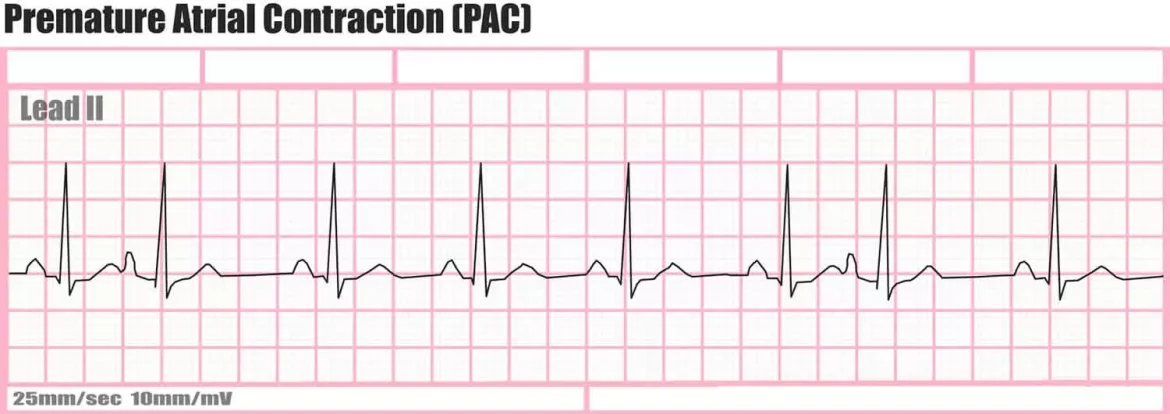Fatal arrhythmia, or life-threatening heart rhythm disorders, represent a significant medical concern due to their potential to lead to sudden cardiac death. These arrhythmias disrupt the normal electrical impulses that coordinate heartbeats, leading to irregular heart rhythms that can impair the heart’s ability to pump blood effectively. Understanding the types, causes, symptoms, and treatment options for fatal arrhythmias is crucial for early detection and management, potentially saving lives.
Understanding Fatal Arrhythmia
Fatal arrhythmia refers to any cardiac arrhythmia that can result in sudden cardiac arrest or death if not promptly and effectively treated. Arrhythmias can occur in various forms, ranging from relatively harmless to immediately life-threatening.
The Heart’s Electrical System
The heart’s electrical system controls the rate and rhythm of the heartbeat. Each beat of the heart is initiated by an electrical impulse generated by the sinoatrial (SA) node, located in the right atrium. This impulse triggers the atria to contract and pumps blood into the ventricles. The impulse then travels to the atrioventricular (AV) node, where it is briefly delayed before spreading to the ventricles. This delay allows the ventricles to fill with blood before they contract and pump blood out to the lungs and the rest of the body.
When this electrical system malfunctions, it can produce arrhythmias, which are broadly classified into bradyarrhythmias (abnormally slow heart rates), and tachyarrhythmias (abnormally fast heart rates). Fatal arrhythmias are typically severe forms of tachyarrhythmias and include conditions such as ventricular fibrillation (VF) and ventricular tachycardia (VT).
Types of Fatal Arrhythmias
Ventricular Fibrillation (VF): VF is a particularly dangerous type of arrhythmia where the electrical activity of the ventricles becomes chaotic, causing the heart to stop pumping blood, leading to collapse and sudden cardiac death if not treated within minutes. VF is the most common arrhythmia leading to sudden cardiac arrest.
Ventricular Tachycardia (VT): VT is a fast, regular beating of the heart that arises from improper electrical activity in the ventricles. It can quickly deteriorate into VF or lead to significant hemodynamic compromise, making it potentially fatal without intervention.
Torsades de Pointes: This is a unique type of VT that can occur in the context of a prolonged QT interval on an electrocardiogram (ECG). It can degenerate into VF and is often triggered by certain medications, electrolyte imbalances, or genetic conditions.
Causes of Fatal Arrhythmias
Fatal arrhythmias can be caused by various factors, including structural heart disease, heart attack, cardiomyopathies, electrolyte imbalances, drug effects, and genetic disorders.
Heart Disease: Conditions such as coronary artery disease (CAD) or heart muscle damage from previous heart attacks are common causes of arrhythmias. Scarring of heart tissue can interfere with the heart’s electrical impulses.
Electrolyte Imbalances: Potassium, calcium, and magnesium are crucial for proper electrical signaling in the heart. Abnormal levels can trigger fatal arrhythmias.
Drugs and Substances: Certain medications, including antiarrhythmic drugs ironically, as well as stimulants like cocaine and amphetamines, can provoke fatal arrhythmias.
Genetic Conditions: Genetic factors can predispose individuals to arrhythmias, with conditions like long QT syndrome and Brugada syndrome being notable examples.
The diagnosis of fatal arrhythmias involves several tools:
Electrocardiogram (ECG): The primary tool for diagnosing arrhythmias, showing the heart’s electrical activity and rhythm.
Holter Monitor: A portable ECG device worn for 24-48 hours to record heart activity over time.
Event Monitors: Used for intermittent symptoms, recording heart rhythms when activated by the user during an event.
Electrophysiological Study (EPS): A specialized invasive test where wires are threaded into the heart to study its electrical activity and assess the risk of arrhythmias.
Treatment Options
The treatment of fatal arrhythmias focuses on immediate stabilization followed by long-term management strategies:
Cardiopulmonary Resuscitation (CPR) and Automated External Defibrillators (AEDs): Immediate responses to sudden cardiac arrest, vital for survival.
Medications: Antiarrhythmic drugs can be used to control or prevent arrhythmias but must be carefully managed due to potential side effects.
Catheter Ablation: A procedure that destroys the heart tissue causing abnormal electrical signals.
Implantable Cardioverter-Defibrillator (ICD): A device implanted in the chest to monitor heart rhythms and deliver electric shocks when necessary to restore normal rhythm.
Conclusion
Fatal arrhythmias are a critical and urgent medical issue, given their potential to lead to sudden death. Public awareness, timely diagnosis, effective treatment, and preventive measures are essential components in managing these severe health risks. Understanding and addressing the factors that contribute to fatal arrhythmias can help reduce their incidence and improve survival rates in those affected.
FAQs
What are arrhythmias?
Arrhythmias are conditions in which there is an abnormal rhythm of the heartbeat. This can mean the heart beats too fast, too slow, or with an irregular pattern. Common types of arrhythmias include atrial fibrillation, ventricular fibrillation, tachycardia, and bradycardia. Arrhythmias can be harmless or life-threatening, depending on their nature and severity.
They may arise from heart disease, electrolyte imbalances, injury from a heart attack, or could be congenital.
How do you know if you have symptoms of heart disease?
Symptoms of heart disease can vary widely based on the specific type of heart condition. Some common symptoms include:
- Chest pain or discomfort, often during physical activity or stress
- Shortness of breath
- Fatigue and weakness
- Swelling in the legs, ankles, or feet
- Palpitations (a feeling of the heart racing or throbbing)
- Dizziness or lightheadedness
- Fainting spells
Is it normal for a heartbeat of 100-110?
A resting heart rate of 100-110 beats per minute is considered higher than normal for most adults, whose typical resting heart rate ranges from 60 to 100 beats per minute. A faster resting heart rate, known as tachycardia, can be caused by various factors including stress, anxiety, medication, or underlying health conditions. If your resting heart rate is consistently in this range, it’s advisable to consult with a healthcare provider to determine the underlying cause and appropriate management.


